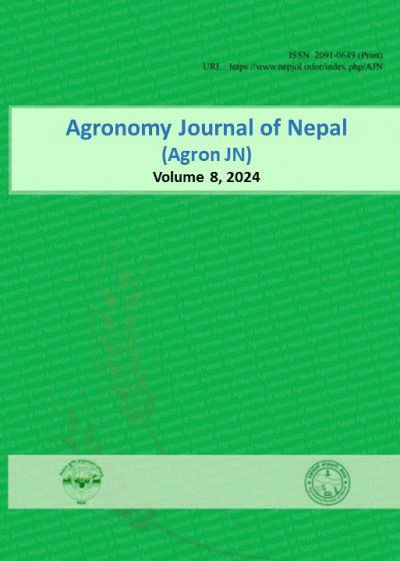Assessment of Agronomic Traits and Molecular Diversity Using SSR Markers in Soyabean, (Glycine Max (L.) Merr. Accessions in Nepal
DOI:
https://doi.org/10.3126/ajn.v8i1.70793Keywords:
Cluster analysis, genetic diversity, phenotypic traits, Simple Sequence Repeats (SSR)Abstract
Soybean, (Glycine max (L.) Merr. is an important multipurpose pulse crop that provides edible oil and protein, and improves soil fertility. In spite of being rich in germplasms, the genetic diversity of soybean in Nepal is still underexplored. The purpose of this study is to examine the phenotypic and molecular diversity of soybean by utilizing morphological features in conjunction with simple sequence repeat (SSR) markers. A total of 150 soybean germplasms received from different sources were used for field study at DoAR, Dasharathpur; GLRP, Rampur, and NARC, Khumaltar in consecutive years 2019 and 2020 whereas 141 germplasms were used for molecular study with 30 SSR markers at NBTRC, Khumaltar. Genotypes differed in phenotypic traits, the expression of different agronomic traits and biomass are influenced by genetic differences. The SSR markers supported the presence of genetic diversity showing 124 alleles and 89.11% polymorphism, and an average PIC value of 0.795. Hierarchical clustering and principal coordinate analysis also supported the presence of genetic variation and relationship among the studied genotypes. This study offers insightful information for utilizing these germplasms in future crop improvement in Nepal.
Downloads
Downloads
Published
How to Cite
Issue
Section
License
Copyright (c) 2024 Agronomy Society of Nepal (ASoN)

This work is licensed under a Creative Commons Attribution-NonCommercial 4.0 International License.
ASON permits for free use, distribution and reproduction in any medium if the original work is properly cited and not used for commercial purposes.




